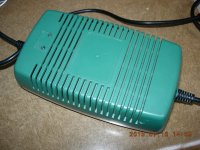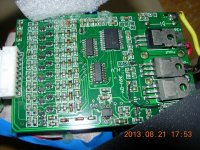Many OEM bike suppliers advise you to plug the charger into the battery before switching the charger on at the wall. Does anybody know the basis to this instruction?
On all the batteries that I've tried that, you get a nasty spark when you connect, which I guess is capacitors in the charger getting inrush. You can see the damage it does to the jack socket in bottle batteries. In one case the damage was so bad that the jack-plug hooked the earth strip out when it was unplugged, which shorted out the charge socket completely and made big sparks.
If you switch on at the wall first, does the inrush to the capacitors damage the charger? Is that the reason they don't want you to do it that way round?
On all the batteries that I've tried that, you get a nasty spark when you connect, which I guess is capacitors in the charger getting inrush. You can see the damage it does to the jack socket in bottle batteries. In one case the damage was so bad that the jack-plug hooked the earth strip out when it was unplugged, which shorted out the charge socket completely and made big sparks.
If you switch on at the wall first, does the inrush to the capacitors damage the charger? Is that the reason they don't want you to do it that way round?






